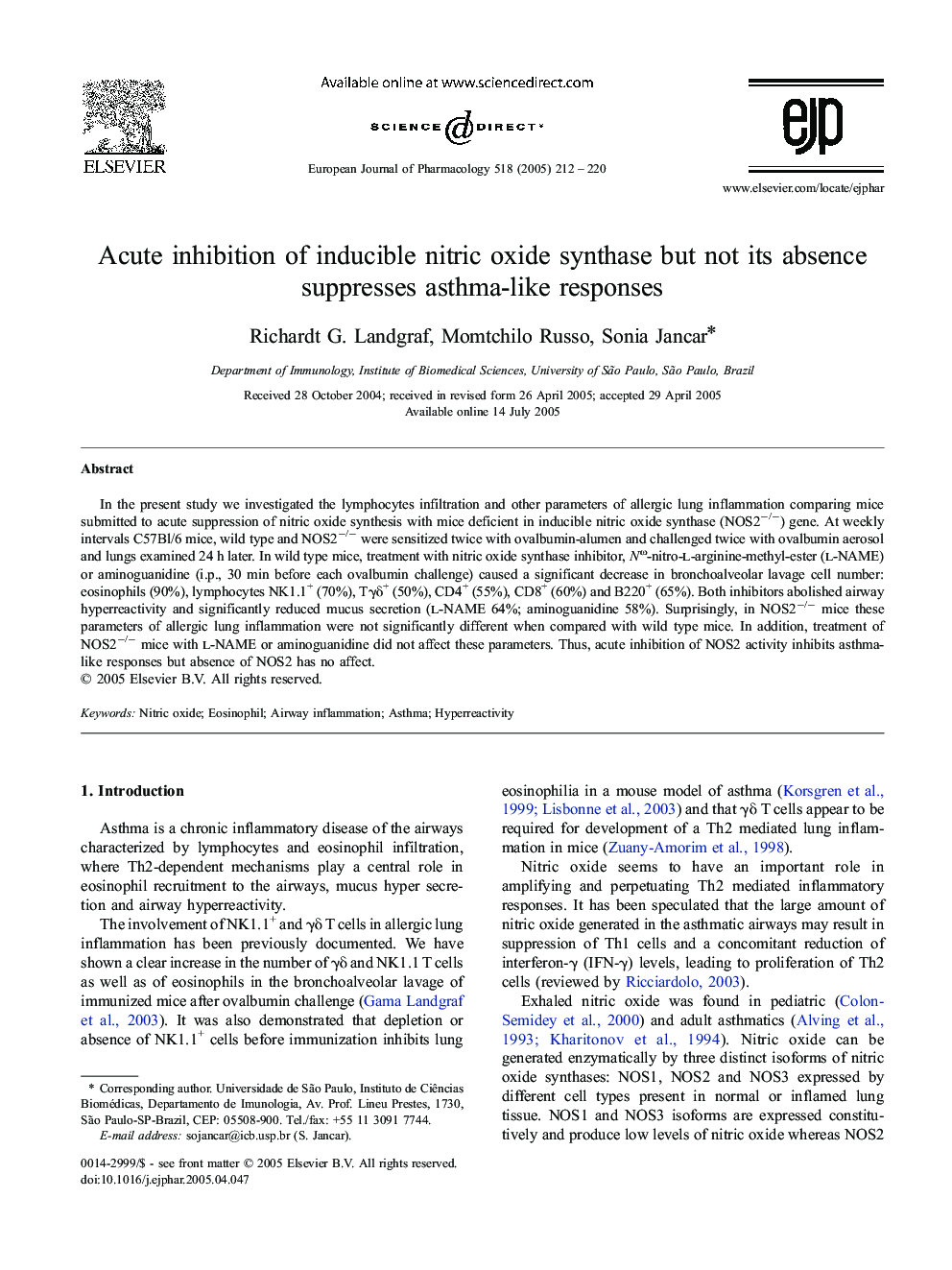| Article ID | Journal | Published Year | Pages | File Type |
|---|---|---|---|---|
| 9921195 | European Journal of Pharmacology | 2005 | 9 Pages |
Abstract
In the present study we investigated the lymphocytes infiltration and other parameters of allergic lung inflammation comparing mice submitted to acute suppression of nitric oxide synthesis with mice deficient in inducible nitric oxide synthase (NOS2â/â) gene. At weekly intervals C57Bl/6 mice, wild type and NOS2â/â were sensitized twice with ovalbumin-alumen and challenged twice with ovalbumin aerosol and lungs examined 24 h later. In wild type mice, treatment with nitric oxide synthase inhibitor, NÏ-nitro-l-arginine-methyl-ester (l-NAME) or aminoguanidine (i.p., 30 min before each ovalbumin challenge) caused a significant decrease in bronchoalveolar lavage cell number: eosinophils (90%), lymphocytes NK1.1+ (70%), Tγδ+ (50%), CD4+ (55%), CD8+ (60%) and B220+ (65%). Both inhibitors abolished airway hyperreactivity and significantly reduced mucus secretion (l-NAME 64%; aminoguanidine 58%). Surprisingly, in NOS2â/â mice these parameters of allergic lung inflammation were not significantly different when compared with wild type mice. In addition, treatment of NOS2â/â mice with l-NAME or aminoguanidine did not affect these parameters. Thus, acute inhibition of NOS2 activity inhibits asthma-like responses but absence of NOS2 has no affect.
Related Topics
Life Sciences
Neuroscience
Cellular and Molecular Neuroscience
Authors
Richardt G. Landgraf, Momtchilo Russo, Sonia Jancar,
